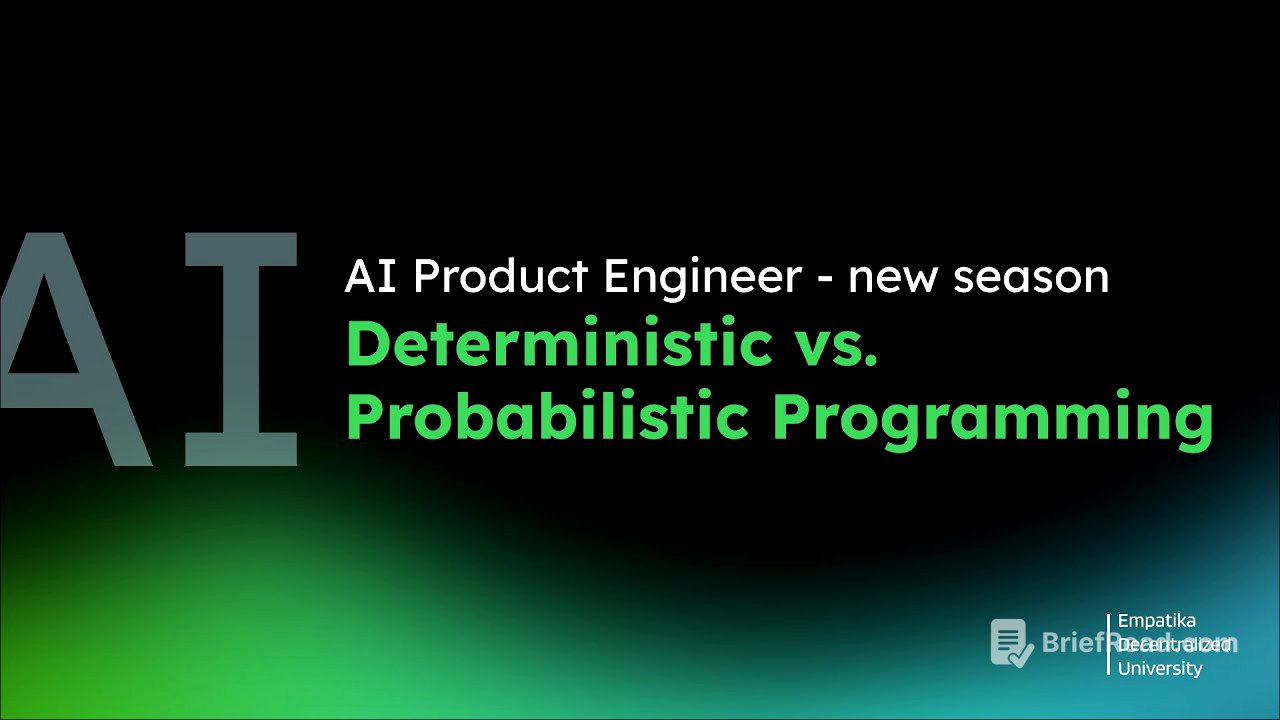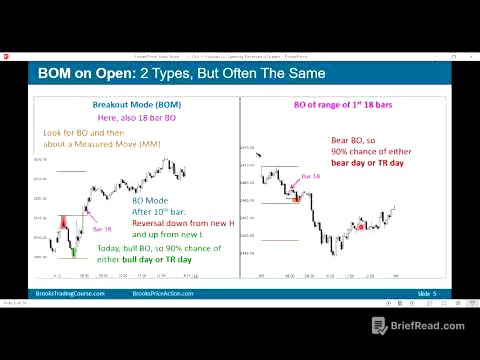TLDR;
This video introduces the AI Product Engineer course, focusing on the integration of AI in product management and engineering. It highlights the importance of understanding the differences between deterministic and probabilistic programming approaches, which will be a recurring theme throughout the course. The course will cover automating product feedback processing, building multi-agent systems, and designing quality measurement metrics for AI systems. The goal is to equip developers and product managers with the skills to combine deterministic and probabilistic methods effectively, leveraging AI to automate and improve various aspects of product development and management.
- Understanding deterministic vs. probabilistic programming is crucial.
- Automating product feedback and building multi-agent systems are key topics.
- Combining deterministic and probabilistic approaches is essential for effective AI integration.
интро [0:00]
The video introduces the second season of the AI Product Engineer course, which has evolved significantly due to the rapid emergence of new technologies. The course aims to keep participants updated with the latest advancements, such as agent coding infrastructure and the ability to launch agents that run code in containers. The instructor encourages participants to suggest new topics of interest, which may be incorporated into the curriculum or addressed during Office Hours.
структура курса [3:07]
The course structure emphasizes understanding the difference between deterministic and probabilistic programming approaches. These differences will be highlighted throughout various topics. The course aims to combine both approaches, recognizing their respective pros and cons, rather than advocating for a complete switch to probabilistic programming. The goal is to show how these paradigms complement each other in building AI systems.
сквозной проект [10:25]
Participants will engage in an end-to-end project, creating an AI product manager to automate tasks such as processing product feedback, conducting user research, and managing virtual userboards. The project involves automating the analysis of product feedback from various sources (text, video, screenshots) to classify bugs and features, conduct competitor research, and formulate feature specifications. The ultimate aim is to automate significant portions of a product manager's responsibilities using AI.
Deterministic vs Probabilistic [12:05]
The video discusses the shift in programming paradigms due to AI, referencing Tim O'Reilly's article "The End of Programming." The core idea is that while programming isn't ending, it's transforming, requiring current programmers to adapt. The integration of Large Language Models (LLMs) as backends introduces a new type of interaction, moving developers to a higher level of abstraction. This shift necessitates developers to be more involved in product aspects and product managers to engage more in development, blurring traditional roles.
live-coding [25:33]
The presenter demonstrates using the tool "clotд" to increase productivity. The demonstration involves using clotд to write code for text summarization using both deterministic and probabilistic approaches. The task is to categorize product feedback to identify bugs, features, and non-productive comments. The deterministic approach uses the NLTK library to search for specific words, while the probabilistic approach uses LLMs to summarize and categorize feedback.
сравнение подходов [43:40]
The presenter summarizes the comparison of the two approaches, noting that the deterministic method is faster and identifies specific sentences by word frequency. However, it may repeat sentences and miss overall meaning. The probabilistic method, while more expensive, yields better results. The key difference is that the deterministic approach extracts sentences from the source text, while the probabilistic approach reworks the text entirely.
deterministic [45:10]
Deterministic systems produce completely determined outputs, allowing for inspection and modification of the input-to-output transformation. These systems offer predictable execution, enabling predictable tests and rule-based logic. The logic is transparent and auditable, making them suitable for regulated environments like banking, where decision-making processes must be explainable to prevent discrimination.
probabilistic [57:25]
Probabilistic systems learn from data and require probabilistic tests. They are well-suited for situations with high input variability, such as spam detection, where deterministic rules can be easily circumvented. These systems can generate text and artifacts, making them ideal for generative AI applications. The presenter shares a personal experience where an LLM identified a public database of Swiss salaries, demonstrating its superior domain knowledge compared to a human expert.
ключевые различия [1:00:35]
The video presents a table comparing deterministic and probabilistic approaches, emphasizing that the goal is to combine them. Deterministic systems are used when logic is clear and rules can be easily described, while probabilistic systems are used when logic is unknown or requires specialized knowledge. Active research in explainable AI (XAI) aims to understand how LLMs arrive at their outputs, improving auditability and control. Deterministic systems are faster and more stable, while probabilistic systems require less domain expertise due to their ability to learn from data.
домашнее задание [1:07:59]
The homework assignment involves creating an agent that interprets reviews in two ways (deterministic and probabilistic) and generates a report. Participants are encouraged to use one of the agency frameworks, such as Crew AI, Autogen, Camel, or Google Ads Agent Development Kit. The agent should analyze reviews from an online system or text file and produce a report similar to what a human product manager would create, summarizing key points, complaints, and requests.
заключение [1:11:06]
The key takeaway is that depending on the business problem, a combination of deterministic and probabilistic approaches is necessary. Deterministic approaches compensate for the shortcomings of probabilistic ones and vice versa. When designing systems, it's crucial to decide in advance which components will be probabilistic and which will be deterministic, based on criteria such as speed, cost, and interpretability. The emergence of smaller models and cost reduction trends in LLMs are also shifting the speed and cost considerations.









